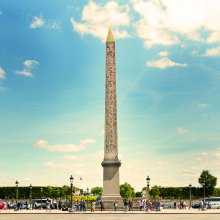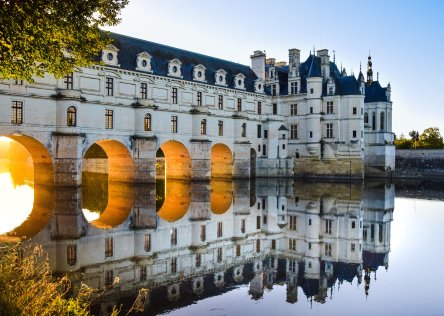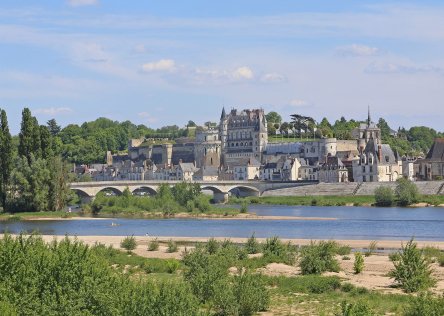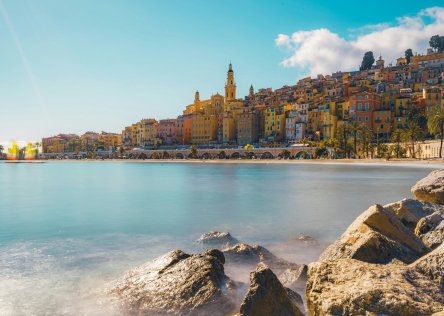We think that the best way to explore a place is to see it through the eyes of the people who live (or have lived) there. Here we provide a self-guided walking tour of the Montmartre district of Paris, which has historically been known for its arts scene. You will walk in the footsteps of some of its most famous former inhabitants.
Some of Montmartre's most famous inhabitants
French artist Henri de Toulouse-Lautrec was active in the late 19th century (during La Belle Époque) and became famous for his paintings and posters depicting life and events in Paris. He lived and worked in the Montmartre and was a well-known patron of the Moulin Rouge cabaret, circuses, dance halls and nightclubs and racetracks. He often depicted the district's cabaret entertainment and bohemian life in his paintings, which are now recognizable all over the world.
At the end of the 19th and beginning of the 20th century, famous artists and poets Renoir, Modigliani, Apollinaire and Picasso lived in the area and would often frequent one of the oldest cabarets in Paris, Au Lapin Agile. It is on the Rue des Saules, a couple of blocks north of the Museum of Montmartre (which used to be Renoir's workshop).
Later in the 20th century Au Lapin Agile also drew in famous Americans, including actors Charlie Chaplin and Vivien Leigh. Pablo Picasso lived on the 2nd floor of an apartment at 49 Rue Gabrielle and painted the famous Les Demoiselles d’Avignon nearby at Bateau Lavoir, 13 Rue de Ravignan.

Moulin Rouge cabaret, Montmartre, around 1900 (Internet Archive Book Images)
How to get to Montmartre
The nearest metro station is Anvers on Line 2 or Pigalle on Lines 2 and 12.
The apartments of Toulouse-Lautrec
Start this self guided walking tour of Montmartre at the Place Pigalle and walk along to the Rue Pierre Fontaine. Toulouse-Lautrec lived in four different apartments on this street. You’ll find a plaque at number 19, but he also lived at number 19B, 21 and 30. Artist Edgar Degas lived here too and became an artistically influential friend.

At the Moulin Rouge - The Dance by Toulouse-Lautrec (Wikimedia Commons - Public Domain)
A lovely chocolate shop
If you like chocolate, you might want to try A L’Etoile d’Or at 30 Rue Pierre Fontaine, just a block away from the Moulin Rouge. It is open daily except Sundays.
Moulin Rouge
On the Boulevard de Clichy, the famous Moulin Rouge is hard to miss. It was a favorite haunt among many living in Paris during La Belle Epoque and inspired Toulouse-Lautrec's legendary poster featuring the dancer “La Goulue”. Nowadays many people will remember the eponymous movie, Moulin Rouge (2001), starring Nicole Kidman and Ewan McGregor. Ticket prices for the show (no drinks or food included) start from around 90 euros, depending on the night and ticket availability. For dinner and a show with half a bottle of champagne included, tickets cost more than 200 euros each.

Moulin Rouge (CC BY-SA 4.0)
Café des Deux Moulins from the film Amélie
Back on Rue Lepic you'll find the Deux Moulins café, made famous by the French film Amélie. The food there is nothing special and it is overpriced due to its fame, so we do not especially recommend it as an eating option. However, it may be quite a special experience if you’re a fan of the movie, and you might enjoy taking some photos in front of the Amelie poster inside. The club sandwich is good if you want to stop for a bite to eat during your walking tour of Montmartre.

Café des Deux Moulins on Rue Lepic in Montmartre (Martin Robson CC BY 2.0)
Vincent Van Gogh's former residence
Many artists chose to make Rue Lepic their home, including Vincent van Gogh, who moved into his brother's third-floor apartment at no. 54. It was from here that he painted View of the Rue Lepic, which is on display at the Van Gogh Museum in Amsterdam.

Plaque on the building where van Gogh lived with his brother at 54 Rue Lepic in Montmartre
(Britchi Mirela - CC BY-SA 3.0)
Toulouse-Lautrec’s former art studio
Just off Rue Lepic is Rue Tourlaque. You´ll see artist Toulouse-Lautrec's fifth-floor studio on the corner on the far side of Rue Caulaincourt, which he worked in for 12 years. Look for the number '5' on the wall in the middle of the building, and notice how the large gridded attic windows would have allowed plenty of light to flood into the room. These were the perfect light conditions for a painter and it was here that Toulouse-Lautrec created his legendary posters.

Rue Caulaincourt, Montmartre (CC BY 2.0)
A favourite hotel of the stars
Hidden away between Rue Lepic and Avenue Junot is the charming L’Hôtel Particulier Montmartre, a very private hotel with leafy surroundings. Perfect for hiding away from the limelight, Paris has many 'hotels particuliers'. They are normally mansion-style buildings that used be the homes of the French aristocracy. They are expensive, exclusive and often have lovely gardens and courtyards. The Hotel Particulier in Montmartre once belonged the Hermès family and has hosted Hollywood stars Keira Knightley, Brad Pitt, Angelina Jolie, Tom Hanks and Scarlett Johansson.
Moulin de la Galette
Back on Rue Lepic, look for the Moulin de la Galette on Google maps. This was a favorite dancing hall of artists Toulouse-Lautrec, van Gogh and Renoir. It was famously depicted in some of their paintings and was the last active windmill in Paris, nowadays a restaurant. Patrons would often be seen trekking up the hill every night to their favorite haunt and drunkenly stumbling back down in the wee small hours.

Moulin de la Galette (Marilane Borges - CC BY 2.0)
Rue de L'Abreuvoir and La Maison Rose
From the Moulin de la Galette, you could continue walking up the Rue Girardon until you reach a bronze bust of Dalida, a famous 20-century French singer. From there, you can follow the bend of the road round to the right, and stroll down the leafy Rue de L'Abreuvoir. Many of the brick walls and traditional houses of this street will be covered with green ivy in the summer months, turning to magnificent colors of red, orange and yellow in the fall. At the corner of Rue de L'Abreuvoir and the Rue des Saules is the very photogenic restaurant, La Maison Rose, at number 2 Rue de l'Abreuvoir. Check the website for opening times.

The quaint cobbled street of the Rue de L'Abreuvoir in Montmartre (Francisco Gonzalez, CC by 2.0)
Museum of Montmartre
On the pretty cobbled street of Rue Cortot you'll find the Musée Montmartre. The buildings that make up the museum are more than 300 years old, and the photos, maps, paintings and posters therein reveal the history of this bohemian neighborhood that was central to the lives and work of many artists. Pierre-Auguste Renoir used the building as his workshop in the latter part of the 19th century and painted La Balançoire and Le Bal du Moulin de la Galette there.

Painting by Renoir, Bal du Moulin de la Galette (Wikimedia Commons, Public Domain)
Caricatures at the Place du Tertre
After your visit to the museum, head to the very touristy area of the Place du Tertre. If you’ve always dreamed of having your caricature drawn, this is THE place to get it done - but please make sure you agree on a price with the artist before starting. Watch your belongings and expect to see inflated prices at the bars and restaurants here. We don't have any favorite restaurants in the Place du Tertre, however, one place of interest that is worth seeing is La Mère Catherine (an eatery at 6 Place du Tertre). This restaurant opened in 1793 and was once known for feeding the area’s starving artists.

Place du Tertre, Montmartre (Mario Sánchez Prada)
Dali Museum
Just behind the Place du Tertre is the Dali Museum, a small but wonderful exhibition of some of Salvador Dali’s artwork and sculptures. It also gives you an insight into his life.
Sacré Coeur Basilica
The next stop is the spectacular and iconic Sacre Coeur Basilica. If you would like to go inside, you can admire the incredible Apse Mosaic, the 475-square-meter Mosaic of Christ in Glory by Olivier Merson, H. M. Magne and R. Martin, inaugurated in 1923. It is one of the largest mosaics in the world. Outside the basilica you can enjoy a nice view of Paris (but be aware that it does not include the Eiffel Tower).
The Story behind the Sacré Coeur
The Catholic Church ordered the construction of the Sacre Cœur in the 1870s, to atone for the “crimes” of the Commune. The Commune was a rebellion by Parisians against the new government right after Napoleon and the defeat in Prussia. It lasted for two months in 1871 and culminated in the “bloody week” and the defeat of the rebels, with about 7,000 to 10,000 executions.
The thwarted opposition, which included future French Prime Minister Georges Clemenceau, eventually got its revenge by naming the space at the foot of the monumental staircase Square Willette, after the local artist who turned out on inauguration day to shout “Long live the devil!” It was renamed Square Louise-Michel after another key figure of the Communes in 2004.

Sacré Coeur Basilica, Montmartre (CEllen - CC BY-SA 4.0)
Scenes from the movie Amelie
From the Sacre Coeur you can wander down the steps, through the gardens made famous by Amélie Poulain in the famous French film Amelie - look out for the carousel in particular! Here is a short clip from the love story between Amélie Poulain and her love interest Nino Quincampoix.
Scenes from French movie Amélie at Montmartre near the Sacré Coeur
Marché Saint Pierre
At the bottom of the gardens to the left is the very famous Marché Saint Pierre at 2 rue Charles Nodier, open daily except Sundays from 10am - 6:30pm.
The Marché Saint Pierre is a paradise for dressmakers! There are floors and floors of fabrics, buttons, ribbons, etc. Again, be sure to ask about prices before deciding to buy.
Other places of interest in Montmartre
Montmartre cemetery
If you would like to visit Montmartre cemetery and see the final resting places of famous people such as impressionist artist and sculptor Edgar Degas, male Russian ballet dancer Vaslav Nijinsky, film-maker and director François Truffaut or author Émile Zola (among many others), you can take a detour during your walking tour and enter the cemetery at the entrance on 20 Avenue Rachel. Here is a map of the cemetery.
If you would like to do a self-guided tour of Paris, please visit our tours page to see our Paris itineraries.












